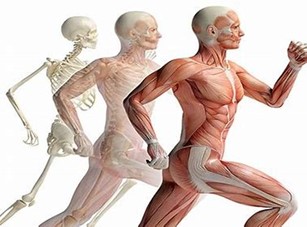What is Kinesiology?
And what does it have to do with being healthy?
Hello! My name is Madison Crisler, and I am a contributing writer to Jump IN’s blog. I’m here to talk to you about kinesiology. I have a bachelor’s degree in kinesiology, and I am currently studying to receive my masters in kinesiology as well. You may have heard the work kinesiology before and had a vague sense of its meaning. It’s simple: kinesiology is the study of human movement. Using kinetics, or the science of human movement, we can learn all about the body and how it moves.

Typically in Kinesiology other aspects of science are used as well. Kinesiology uses anatomy, physiology, biomechanics, physics, and even psychology to understand the different ways the human body can move and perform. We should learn about the body and its movements not only to improve its function, but to help return to its normal state. In kinesiology we learn where the bones, muscles, ligaments, and joints are, and what their intended function is. If you think about it, if we did not know how the body properly moved, we would not be able to know when something is not moving correctly or properly! Being able to understand how the body works and why it does the things that is does can help when trying to get stronger, lose weight, perform better in sports, or even fix an injury. Kinesiology can help improve your overall health and wellness in many aspects.

Understanding what kinesiology is and why we study it is one aspect, but what about who uses this? Kinesiology students tend to go on to become physical therapists, occupational therapists, personal trainers, wellness directors and even strength and conditioning coaches. We can use kinesiology to improve someone’s breathing after a stroke or a heart attack; help bring back someone’s ability to walk, write, or even stand after an incident; lower someone’s blood lipid levels; or even become a top tier athlete. Kinesiology also teaches us about how to improve our physical fitness level, whether it be cardiovascular or muscular.
Click here to learn more about the importance of movement and how it impacts your health.
Topics: Uncategorized
Subscribe for more
Want more ideas for healthy schools, workplaces, child care providers, and families? Subscribe to our blog for weekly tips delivered right to your inbox!
The Built Environment, Infrastructure, and Health by Design NEXT »
Why Is Obesity a Problem for So Many Children?
